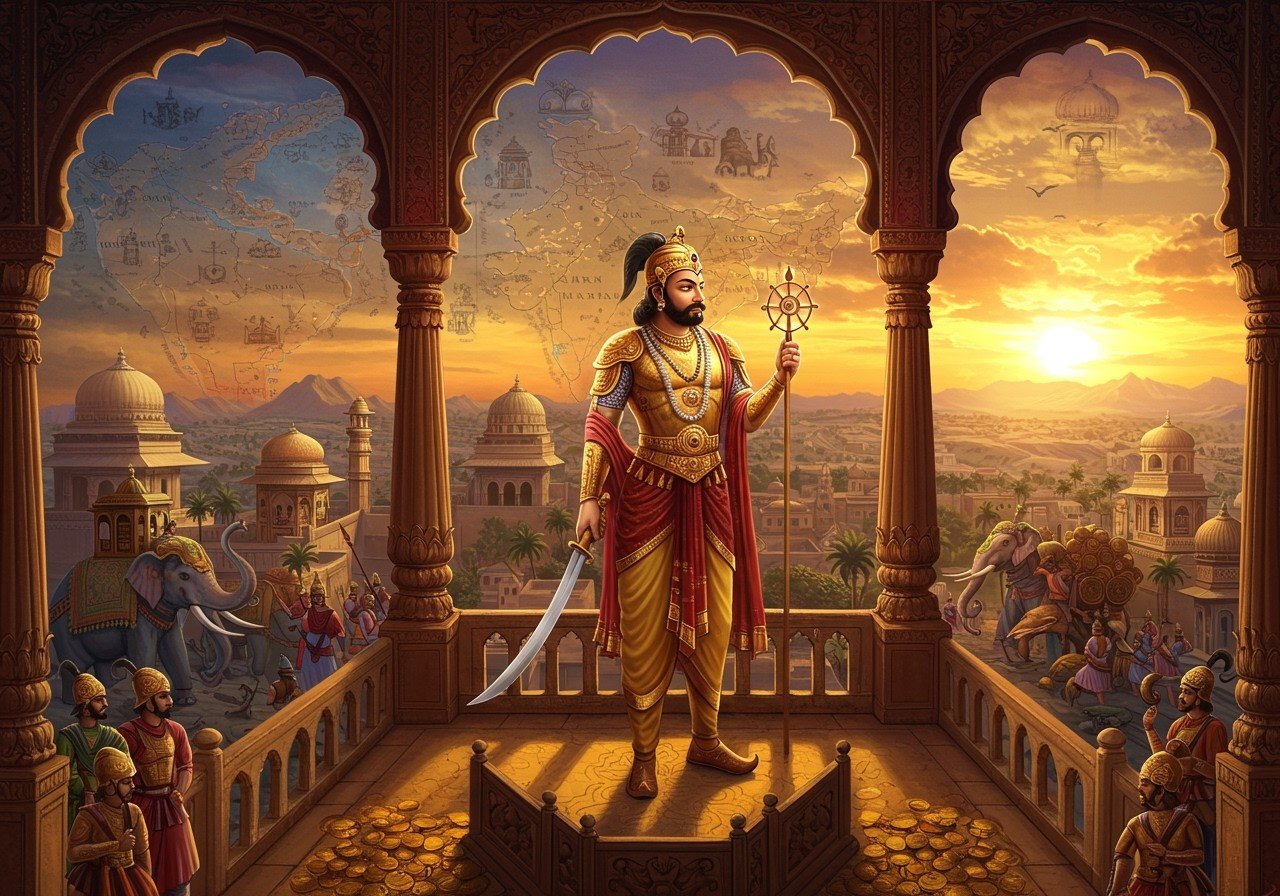
Chandragupta Maurya (320 BCE to 298 BCE), the founder of the Maurya Empire, stands as a pivotal figure in ancient Indian history. He unified a significant portion of the Indian subcontinent, establishing a powerful and centralized administration. This blog delves into the life, reign, and enduring legacy of Chandragupta Maurya, exploring the key events that shaped his rule and the lasting impact he had on India’s political and cultural landscape.
Early Life and Rise to Power
Chandragupta’s early life is shrouded in some mystery, but his rise to power is a story of ambition, strategy, and mentorship. Born around 340 BCE, his humble origins contrast sharply with his later achievements. A pivotal encounter with Chanakya, a brilliant strategist and teacher, transformed Chandragupta’s destiny. Chanakya recognized his potential and mentored him, providing the education and guidance necessary for a future ruler. Under Chanakya’s tutelage, Chandragupta honed his skills, eventually overthrowing the Nanda Dynasty around 322 BCE and laying the foundation for the Maurya Empire.
Chandragupta’s military campaigns and strategic alliances were instrumental in expanding the empire. His conquests encompassed regions like Magadha and territories previously controlled by Alexander the Great’s forces. His marriage to Helen, a princess from the Seleucid Empire, further solidified his power and brought political stability. This fusion of military might and astute diplomacy cemented Chandragupta’s position as a dominant force in ancient India.
Administrative Reforms and Governance
Chandragupta’s reign was characterized by significant administrative reforms. He established a centralized bureaucratic system, ensuring efficient governance across his vast empire. Chanakya’s Arthashastra, a treatise on statecraft and economic policy, served as a guiding principle for the administration. Chandragupta implemented land revenue systems, standardized weights and measures, and fostered trade and agriculture, contributing to the empire’s economic prosperity. His focus on welfare policies, including infrastructure development and public works, further enhanced the empire’s stability and growth.
Later Years, Death, and Legacy
In his later years, Chandragupta embraced Jainism, a spiritual transformation that marked a significant shift in his life. Influenced by the teachings of Jain monk Bhadrabahu, he abdicated his throne around 297 BCE, entrusting the empire to his son Bindusara. He then embarked on a spiritual journey, eventually undertaking Sallekhana, a Jain practice of fasting to death, in Shravanabelagola, Karnataka. This act of renunciation underscores the spiritual and philosophical currents of the time.
Chandragupta Maurya’s legacy is vast and multifaceted. He unified much of India, established a robust administrative system, and fostered economic growth. His embrace of Jainism added another layer to his complex and fascinating life story. The Maurya Empire’s contributions to art, architecture, and literature further solidified his place as a transformative figure in Indian history. His story continues to inspire, offering insights into leadership, spirituality, and the enduring power of ancient traditions.
Exploring Ancient Traditions with Poojn.in
Poojn.in, India’s leading online store for cultural and religious goods, offers a unique opportunity to connect with the rich traditions of ancient India. Explore our wide selection of products, including:
- Ashoka Chal Powder: Discover the traditional uses of Ashoka bark, known for its medicinal properties.
- Arjun Chal Powder: Explore the benefits of Arjun bark, used for centuries in Ayurvedic practices.
- Pooja Asan: Enhance your meditation and prayer practices with a comfortable and traditional asan.
Poojn.in provides high-quality, authentic products that allow you to experience and appreciate the cultural heritage of India. Visit us today to discover more!
Frequently Asked Questions
How did Chandragupta Maurya die? Chandragupta Maurya chose to end his life through Sallekhana, a Jain practice of fasting to death, around 297 BCE. This spiritual decision reflects his deep commitment to Jain philosophy.
Where did Chandragupta Maurya die? He passed away in Shravanabelagola, Karnataka, a place now revered as a significant Jain pilgrimage site.
When was Chandragupta Maurya born? He was born around 340 BCE, although the exact date remains uncertain.
What is Chandragupta Maurya’s legacy? His legacy is multifaceted, encompassing the unification of much of India, establishment of a sophisticated administrative system, and the promotion of economic growth and stability. His personal journey from humble beginnings to emperor and finally to Jain ascetic further adds to his enduring impact.
Who mentored Chandragupta Maurya? Chanakya, also known as Kautilya, a scholar and strategist, was Chandragupta’s mentor and advisor.
What religion did Chandragupta Maurya follow later in life? He embraced Jainism in his later years, a spiritual path that led him to renounce his throne and ultimately embrace Sallekhana.
How long did Chandragupta Maurya rule? He reigned for approximately 24 years, from 320 BCE to 298 BCE.
Did Chandragupta Maurya have any successors? Yes, his son Bindusara succeeded him, continuing the Maurya dynasty and further expanding the empire.


